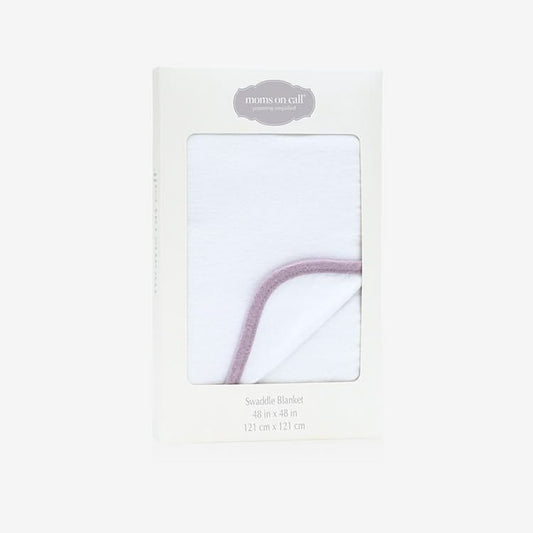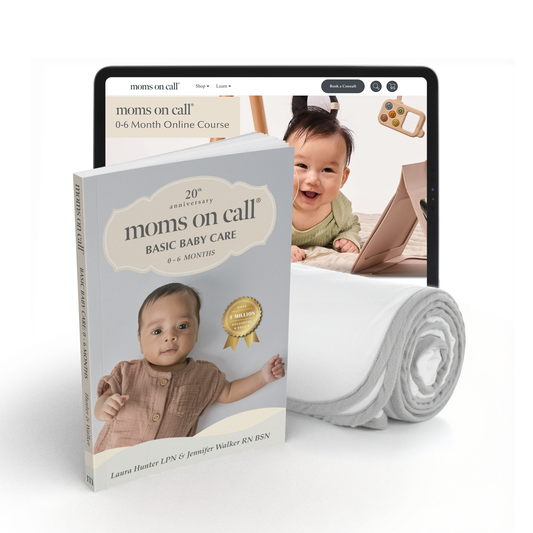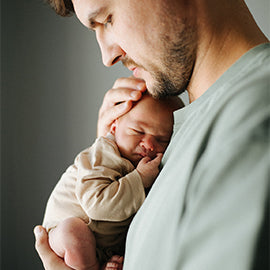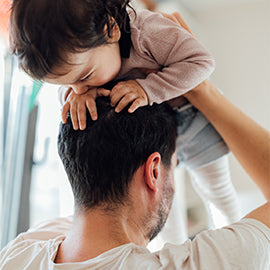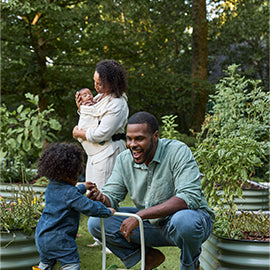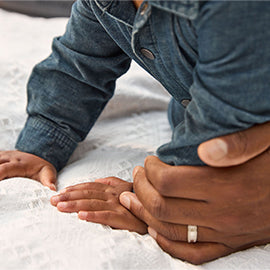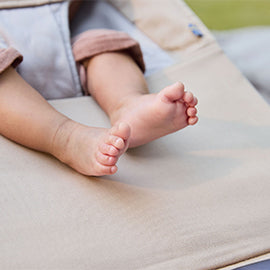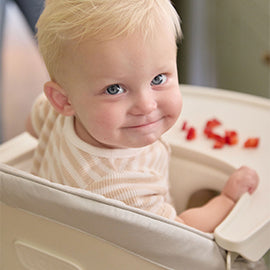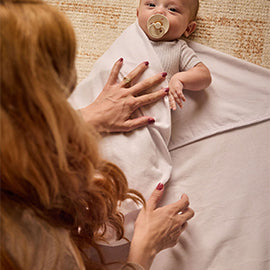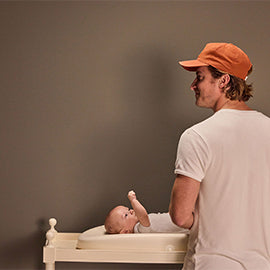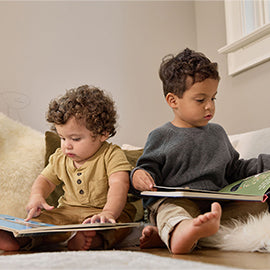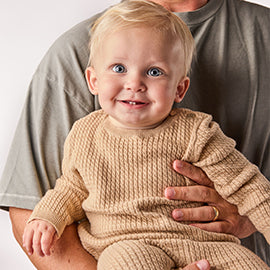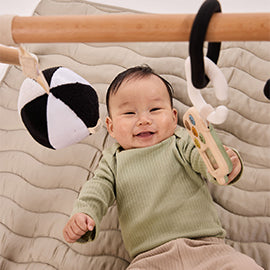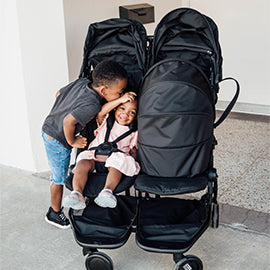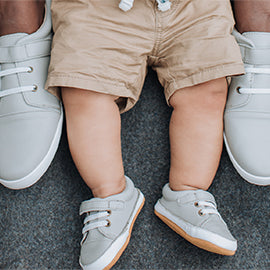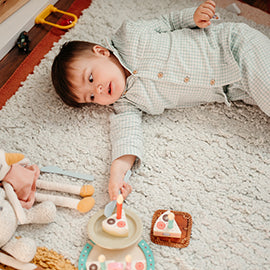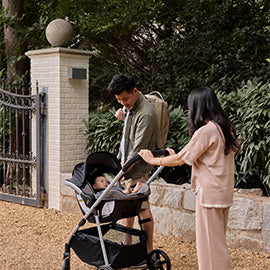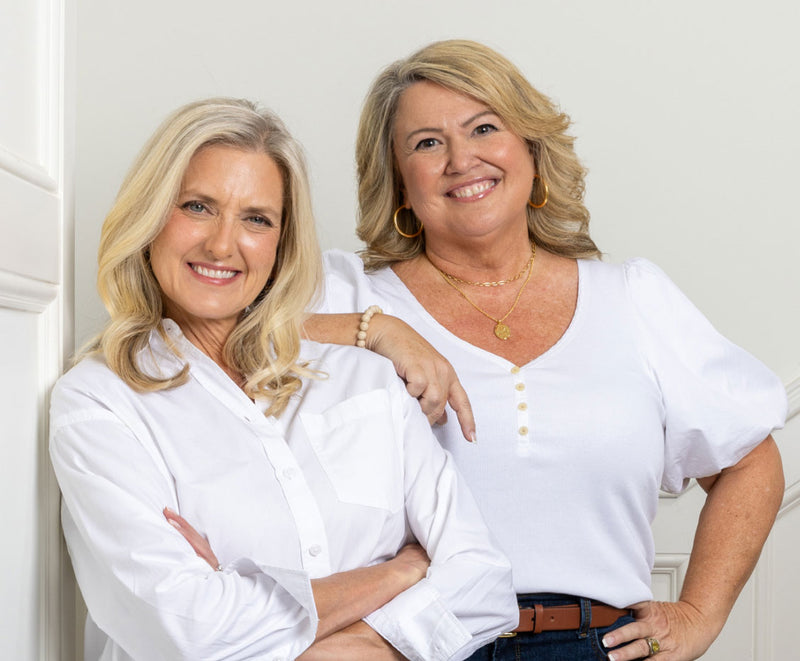As a pediatrician and lactation consultant, my biggest advice to families when feeding their baby is going over the importance of not just a healthy baby, but also a healthy parent. The first few days and weeks of having a newborn can be trying. Determining answers to feeding patterns and sleep cycles, deciphering different cries, all of it can be very overwhelming. Many parents have questions particularly about what to feed their newborn baby and if they’re feeding the baby enough breast milk or infant formula.
In the first 4 to 6 months of life, babies rely exclusively on breastmilk or infant formula for nutrition, hydration, and growing needs. For some parents, they may have already decided on a feeding method before the baby arrives. For most parents, I’ve observed their feeding journeys may morph, change and evolve as time goes on.
As a mother of two little girls, I know my feeding journey has varied drastically between both kids. I was an exclusive pumper with my first which ended my breastmilk journey early for my own mental health. She thereafter became an exclusively formula fed baby around the age of 6 months. My second daughter has been combo fed, and it has been one of the reasons I’ve been able to nurse happily for so long.
Breastfeeding is a natural way to feed your baby, but it certainly doesn’t come naturally. Formula is a life saving creation for so many babies, and parents have so many questions about it!
So Let’s Get Down to the Nitty Gritty of Formula Feeding With This 10 Step Formula Feeding Guide:

-
Choose Your Infant Formula Type:
-
There are three different formula types to choose from
- Powder infant formula: When it comes to powder baby formula, it is usually the cheapest and relatively easiest to use. It’s also the most readily available. Drawbacks include that it can sometimes get messy and clumpy in the mixing process. It can also leave room for error during preparation which is why it’s so important to know how to make and also store formula safely.
-
Ready to feed infant formula: Ready to feed formula is incredibly convenient but is a little bit more costly. It must be refrigerated after opening and may be a little bit more difficult to find. It comes “premixed” and is in liquid form.
- You may notice a slightly different texture between the two types of formula, but usually babies have no preference from what I’ve noticed. For some babies who are immunocompromised, using ready to feed may be an option as it is sterile and further reduces the likelihood of contamination.
- Concentrate infant formula: Concentrate is another option with a longer shelf life but is much harder to find in stores. Like ready to feed, concentrate is also sterile. It’s important here to mention that sterile isn’t a necessity for most babies. Remember, breast milk isn’t sterile either!
-
There are three different formula types to choose from
-
Be Bottle Ready:
-
How to know which bottles will work best for your baby.
- If you choose to bottle feed, the options can seem endless. My personal tip is to look for bottles that latch like nipples, not necessarily the ones that look like breasts, especially if your baby is still breastfeeding. To keep things simple, if your baby is already taking a bottle well and it’s working for you BOTH, then stick with that. In my opinion, the best nipple for baby is the one that baby takes and doesn’t cause latching issues for you as a breastfeeding parent.
- If you still haven’t figured out the best bottle for you and your baby, I personally prefer bottles that allow a deep latch, similar to a nursing latch. If you’re exclusively bottle feeding, I recommend 8-10 bottles at least so you always have a bottle ready to go when you need one. Initially, I prefer a newborn or slow flow nipple. If you’re combo feeding and also nursing at the breast, I usually recommend parents stay with this stage nipple. Smaller bottles typically hold 4 oz while larger bottles hold somewhere between 8-10 oz. Moms on Call recommends the NUK First Essential Bottles, here's why!
-
How to know which bottles will work best for your baby.
-
Recognize Baby’s Hunger Cues:
-
Babies often let you know when they’re hungry.
- Babies make special movements and sounds when they are hungry, and I always try to inform parents of these early so they can be on the lookout for them! These are natural movements and reflexes that can help babies latch and nurse onto the breast or bottle and feed effectively.
- Hunger cues include opening the mouth, making sucking noises or movements, rooting, sucking on fingers, hands, fists or moving their arms and legs. As they begin to get more restless, they may begin to cry which is a late cue. It’s so important to rely on your baby’s feeding cues because an over hungry baby can be difficult to latch, similarly to an overtired baby trying to put themselves to sleep.
- Having a consistent feeding schedule can also be incredibly beneficial as families work toward establishing healthy sleep patterns and creating a sleep schedule.
-
Babies often let you know when they’re hungry.
-
Know the Safety of Your Water:
-
When to use bottled water over tap water.
- When it comes to water, tap water is typically fine as long as it’s safe to drink. You don’t necessarily need to buy “baby water” to prepare formula. Baby water is marketed for situations where tap water may not be safe to drink. You can test tap water to make sure it’s safe or call your local municipality to ask about lead and fluoride levels. Lead levels should typically be low, and some fluoride should be present (but may vary in amount depending on state to state regulations). If you are unsure about the safety of your water, you can always use bottled water or even distilled water.
- You can also bring cold water to a rolling boil and boil for one minute. I don’t recommend boiling for longer as some impurities can become concentrated. Thereafter, we recommend allowing water to cool for about 30 minutes before using it for formula. Always test water temperature before feeding a bottle to your baby.
-
When to use bottled water over tap water.
-
Measure Formula Properly and Safely:
-
Don’t over or under-fill the scoop.
- Baby formula should be measured carefully to avoid over concentration or over dilution which can cause electrolyte abnormalities. Read the instructions on your baby formula thoroughly.
- First measure the water.
- Then use the scoop that comes with the formula.
- I recommend filling the scoop— but not packing it, and scraping off the excess powder with something like the flat side of a butter knife.
- After adding the formula to the water, you may see it displaces water slightly and appears to increase the volume of the feed.
- From a nutrition standpoint, if you use 2 oz of water to make 2 oz of formula (from one scoop of formula powder), it is still considered 2 oz of formula even if it rises slightly above the 2 oz mark on the bottle.
-
Don’t over or under-fill the scoop.
-
Mix the Formula:
-
Swirling beats shaking.
- Mixing baby formula is the next important step.
- Personally, I find gently swirling the bottle rather than shaking is a little bit more helpful as you generate less frothiness when it comes to creating the bottle for the baby. You may find that if you create the bottle in advance you will have to gently swirl it right before feeding to make sure that any powder or clumps that have fallen to the bottom or equally dispersed, and that the formula is dissolved properly.
- I also find that re-warming the bottle in warm water or using warm water initially to create the formula can also help with getting less formula clumps.
-
Swirling beats shaking.
-
Feed the Baby in an Optimal Position:
-
It’s all about paced bottle feedings.
- Paced bottle feeding is my personal favorite way to deliver a bottle. It puts the baby in control of how much milk they get and is also very similar to breast-feeding. To offer a bottle in a paced manner, have the baby sit upright versus reclined. Then offer the bottle level to the baby (versus angled downwards).
- Rather than having the baby in the crook of your elbow, you would actually be holding their head and neck to remain upright since they have little head control as newborns.
- I also recommend offering frequent breaks to allow the baby to recognize when they are full. You don’t have to force your baby to finish every bottle. Paced bottle feeding allows babies to regulate their intake, similar to nursing.
- Side-note: When feeding your baby, you should not bottle prop; bottle propping is against AAP guidance. This is when you place a baby somewhere (for example on a bouncer or a Boppy) and then you use another item like a blanket to position the bottle so the baby can drink from the bottle without you holding it. If the bottle is propped, there’s no way for the baby to control the flow of milk and that can increase the risk of choking.
- Remaining engaged while giving a bottle is so important not only for safety, but also for bonding. You can absolutely still bond with your baby while bottle feeding!
-
It’s all about paced bottle feedings.
-
Burp the Baby as Necessary:
-
Try these three burping methods.
- Babies typically need to be burped because as they swallow breast milk and/or formula, they are also potentially taking in air, especially if they are paced bottle feeding. The baby’s stomach is pretty small in the first few days to weeks. So, when they take in air it can impact the way they feed, how much milk they end up drinking, and how well they are able to continue with the feed. If your child is struggling to continue with a feed, it’s worth checking to see if they need to be burped.
- Personally, I find that burping is the most important during the first months of a baby's life. By around 4 to 6 months (once baby is able to move, roll over and sit up), you may find you don’t need to burp your baby as often, but there is no definite rule. I recommend following your child’s cues, and as they grow older, they may not necessarily need to burp as frequently. In fact, they may actually burp themselves!
- There are some speculations that breastfed infants don't take in as much air so they don't need to be burped. However, if you have a fast letdown, an oversupply or if your baby is pulling off and re-latching, they can still be taking in air as they pull off and try to latch on, in which case I recommend burping.
-
Three methods to burp a baby:
- Over the shoulder burping method- In this method, the baby’s stomach should be over your shoulder with firm patting on the upper back— not on the bottom.
- Sitting up burping method- In this method, the baby is sitting on your lap. While the baby is young, make sure to support the neck up by holding around the chin with firm pats higher up. I personally find this works well for paced bottle feeding given the baby is sitting up while taking in the bottle, too.
- Laying across lap method- In this method, the baby lays across your lap facing down while you pat the upper back. I do personally find that this method can lead to more spitting up.
-
Try these three burping methods.
-
Know How to Store and Discard Infant Formula:
-
Following strict CDC guidelines
- Formula storage is incredibly important for safety regulations. According to CDC guidelines and most formulas sold within the US, prepared formula or mixed powdered formula that has not been used or offered to your baby is good to stay in the fridge for up to 24 hours. Don’t keep bottles of formula or breast milk in the door area of the fridge as it is subject to temperature variations each time the door swings open.
- Once the bottle has been made and is sitting out at room temperature but not yet offered to your baby, it can remain at room temp for up to two hours. It gets tricky after the bottle has touched your baby’s lips as the risk of bacterial contamination could increase. After the bottle has touched the baby's mouth, it should be discarded within the hour of initially offering.
-
Following strict CDC guidelines
-
Clean Bottles:
-
Sterilizing is not always necessary, but thorough cleaning is.
- Generally, when you first buy bottles, they need to be sterilized by a hot run in the dishwasher. After that, you don’t need to sterilize them after every use. In fact, you don’t even need to purchase a sterilizer!
- When cleaning bottles, use hot soapy water soon after the bottle has been used. I don’t recommend allowing the bottle to sit for long periods of time as it increases the likelihood of bacterial growth. You can also put them through the dishwasher with hot water and a hot dry cycle.
- Know that sterilizing and sanitizing infant formula bottles involves an extra step to kill off germs on the surface. Sterilizing and sanitizing is especially important for premature babies, those babies with weakened immune systems, and generally babies less than three months.
- Remember to clean the brush you’re also using to clean your baby's bottles at least once a week by running it through the dishwasher.
-
Sterilizing is not always necessary, but thorough cleaning is.
Check out Bobbie’s infant feeding guide, where you can learn all about ‘is this normal or not’ in the world of feeding.
Bobbie has generously offered Moms on Call families an exclusive discount that can't be found anywhere else. Enter MOMSONCALL25 at checkout to receive 25% off your first box of Bobbie.
More questions? Check with your pediatrician or reach out to us @bobbie. We’d love to hear from you and help you find a great choice for you and your little one (even if it’s not us)!
